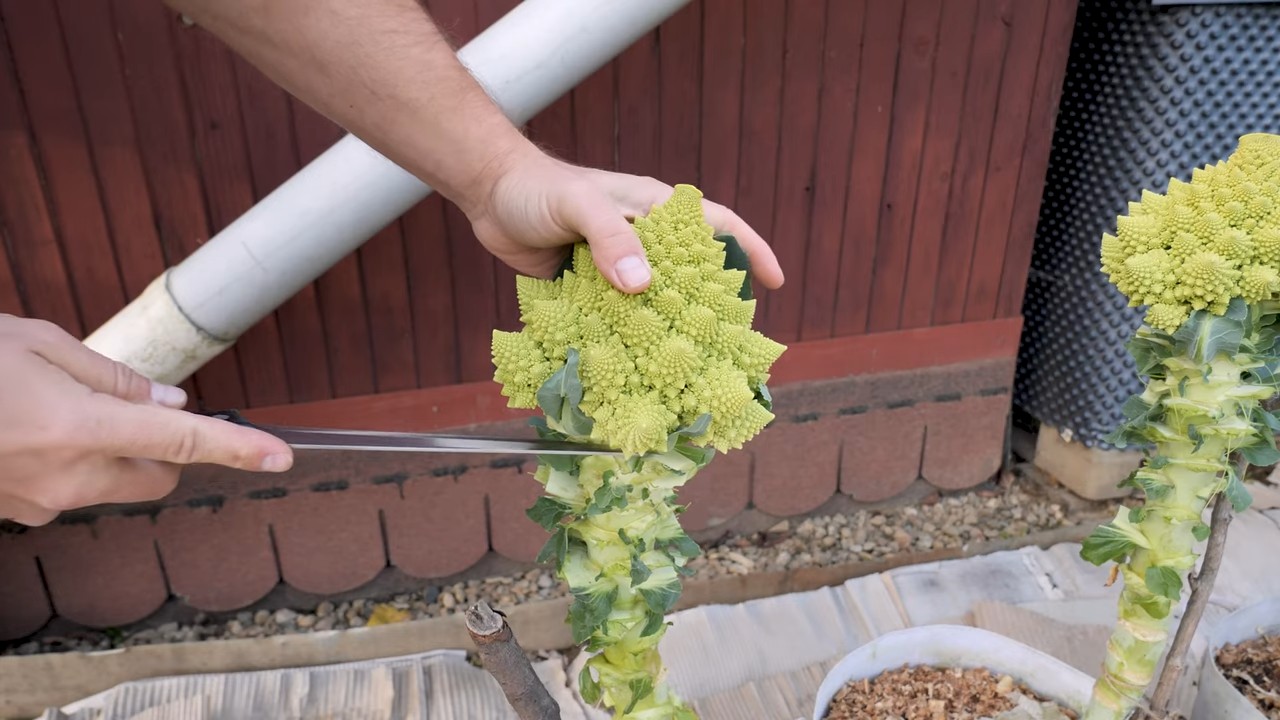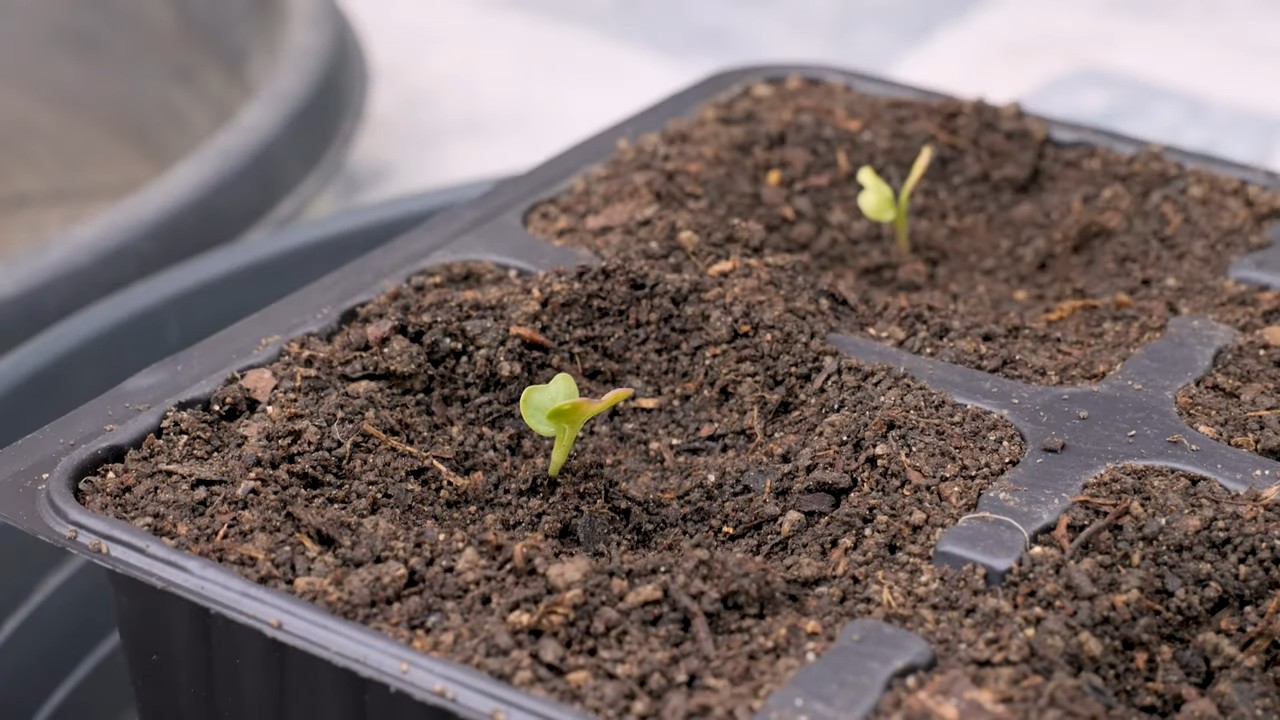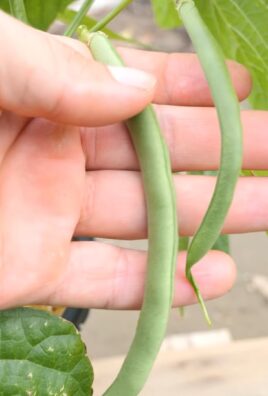Growing Romanesco Cauliflower in Pots might sound intimidating, but trust me, it’s totally achievable, even if you’re short on garden space! Have you ever seen that mesmerizing, fractal-patterned vegetable at the farmer’s market and thought, “Wow, I wish I could grow that”? Well, now you can! For centuries, the Romanesco cauliflower has captivated foodies and gardeners alike with its unique beauty and delicate flavor. Originating in Italy, this vegetable is not only visually stunning but also packed with nutrients.
But why bother growing it in a pot? Well, not everyone has a sprawling garden, and sometimes, even if you do, the soil might not be ideal. Plus, growing in pots gives you more control over the environment, protecting your precious Romanesco from pests and diseases. This DIY guide will walk you through every step, from choosing the right pot and soil to nurturing your plant to harvest. I’m going to share some simple tricks and hacks that will make growing Romanesco Cauliflower in Pots a rewarding and delicious experience. Get ready to impress your friends and family with your homegrown, geometrically perfect cauliflower!

Growing Romanesco Cauliflower in Pots: A Step-by-Step Guide
Okay, so you want to grow Romanesco cauliflower in pots? Awesome! It’s totally doable, and honestly, there’s nothing quite like harvesting your own spiraling, fractal-licious veggie. It might seem a bit intimidating at first, but trust me, with a little planning and care, you’ll be enjoying homegrown Romanesco in no time. I’ve broken it down into easy-to-follow steps, so let’s get started!
Choosing the Right Pot and Soil
First things first, we need to talk about the container and the soil. Romanesco needs space to grow, so don’t skimp on the pot size!
* Pot Size: Aim for a pot that’s at least 12 inches in diameter and 12 inches deep. Bigger is generally better, as it gives the roots plenty of room to spread out. A 5-gallon pot is a good starting point, but a 7-gallon or even 10-gallon pot will give you even better results.
* Drainage: Make sure your pot has good drainage holes. Romanesco doesn’t like sitting in soggy soil, which can lead to root rot.
* Soil: Use a high-quality potting mix that’s well-draining and rich in organic matter. Avoid using garden soil, as it can be too heavy and compact in pots. I like to amend my potting mix with compost or well-rotted manure to give my Romanesco a nutrient boost. A mix of peat moss, perlite, and vermiculite also works well.
Starting Your Romanesco Seeds
You can either start your Romanesco seeds indoors or directly sow them into your pots, depending on your climate and the time of year. I usually prefer starting them indoors to get a head start.
* Indoor Starting (Recommended):
* Timing: Start your seeds about 4-6 weeks before the last expected frost in your area.
* Seed Starting Mix: Use a seed starting mix, which is finer and lighter than regular potting mix.
* Planting: Sow the seeds about 1/4 inch deep in small pots or seed trays.
* Watering: Keep the soil consistently moist, but not waterlogged.
* Light: Provide plenty of light. A sunny windowsill might work, but a grow light is even better.
* Hardening Off: Once the seedlings have a few sets of true leaves, gradually acclimate them to outdoor conditions over a week or two before transplanting them into their final pots. This process is called “hardening off.”
* Direct Sowing (If your climate allows):
* Timing: Sow the seeds directly into your pots after the last expected frost.
* Planting: Sow the seeds about 1/2 inch deep.
* Thinning: Once the seedlings emerge, thin them to one plant per pot.
Transplanting Your Seedlings (If you started indoors)
This is a crucial step, so handle your seedlings with care!
1. Prepare the Pot: Fill your chosen pot with your prepared potting mix, leaving a few inches of space at the top.
2. Carefully Remove the Seedling: Gently loosen the soil around the seedling in its small pot. You can use a spoon or your fingers to carefully lift the seedling out, being careful not to damage the roots.
3. Plant the Seedling: Dig a hole in the center of the pot that’s large enough to accommodate the seedling’s root ball. Place the seedling in the hole and gently backfill with potting mix.
4. Water Thoroughly: Water the newly transplanted seedling thoroughly to help settle the soil and reduce transplant shock.
Caring for Your Romanesco Plants
Now comes the ongoing care. Romanesco needs consistent attention to thrive.
1. Watering: Romanesco needs consistent moisture, especially during hot weather. Water deeply whenever the top inch of soil feels dry to the touch. Avoid overhead watering, as this can lead to fungal diseases.
2. Fertilizing: Romanesco is a heavy feeder, so regular fertilization is essential. Use a balanced fertilizer (e.g., 10-10-10) every 2-3 weeks, or a liquid fertilizer every week. You can also side-dress with compost or well-rotted manure.
3. Sunlight: Romanesco needs at least 6 hours of sunlight per day. Place your pots in a sunny location.
4. Pest Control: Keep an eye out for common pests like aphids, cabbage worms, and flea beetles. You can use insecticidal soap or neem oil to control these pests. I prefer organic methods whenever possible.
5. Weed Control: Keep the pots free of weeds, which can compete with your Romanesco for nutrients and water.
6. Mulching: Add a layer of mulch around the base of the plant to help retain moisture, suppress weeds, and regulate soil temperature. Straw, wood chips, or shredded leaves work well.
7. Support: As the Romanesco head develops, it can become quite heavy. You may need to provide some support to prevent the plant from toppling over. You can use a stake or a tomato cage.
Protecting Your Romanesco from the Elements
Romanesco can be sensitive to extreme temperatures.
* Frost Protection: If a frost is predicted, cover your plants with a frost blanket or move them indoors.
* Heat Protection: During hot weather, provide some shade during the hottest part of the day. You can use shade cloth or move the pots to a cooler location.
Harvesting Your Romanesco
This is the most rewarding part!
1. Timing: Harvest your Romanesco when the head is firm and compact, and the florets are tightly closed. The head should be about 6-8 inches in diameter.
2. Cutting: Use a sharp knife to cut the head from the plant, leaving a few inches of stem attached.
3. Storage: Store your harvested Romanesco in the refrigerator for up to a week.
Troubleshooting Common Problems
Even with the best care, you might encounter some problems. Here are a few common issues and how to address them:
* Buttoning (Small Heads): This can be caused by stress, such as lack of water, nutrients, or sunlight. Make sure your plants are getting enough of everything they need.
* Bolting (Premature Flowering): This can be caused by hot weather or inconsistent watering. Try to keep the soil consistently moist and provide some shade during hot weather.
* Root Rot: This is caused by overwatering or poor drainage. Make sure your pots have good drainage holes and avoid overwatering.
* Pest Infestations: Regularly inspect your plants for pests and take action promptly if you find any.
Extra Tips for Success
Here are a few extra tips to help you grow amazing Romanesco in pots:
* Choose the Right Variety: Some Romanesco varieties are better suited for container gardening than others. Look for varieties that are compact and early-maturing.
* Rotate Your Crops: Avoid planting Romanesco in the same pot year after year. This can help prevent soilborne diseases.
* Companion Planting: Plant companion plants like marigolds or nasturtiums to help deter pests.
* Don’t Give Up! Growing Romanesco can be a bit challenging, but it’s also incredibly rewarding. Don’t be discouraged if you encounter some problems along the way. Just keep learning and experimenting, and you’ll eventually get the hang of it.
Growing Romanesco cauliflower in pots is a fun and rewarding experience. By following these steps, you’ll be well on your way to harvesting your own beautiful and delicious Romanesco heads. Happy gardening!

Conclusion
So, there you have it! Growing Romanesco cauliflower in pots might seem like a daunting task at first, but with the right approach, it’s entirely achievable and incredibly rewarding. We’ve walked through the essential steps, from selecting the perfect pot and soil to nurturing your plant through its various growth stages. The vibrant, fractal beauty of a homegrown Romanesco is a sight to behold, and the taste? Absolutely divine! Forget the bland, mass-produced cauliflower from the supermarket; this is a culinary experience you won’t soon forget.
Why is this DIY trick a must-try? Because it empowers you to cultivate a unique and nutritious vegetable, even if you’re limited by space. It’s a fantastic way to connect with nature, learn about the growing process, and enjoy the satisfaction of harvesting your own food. Plus, imagine the bragging rights when you serve a stunning Romanesco cauliflower you grew yourself!
But don’t stop there! Feel free to experiment with different varieties of cauliflower suitable for container gardening. Consider adding companion plants like marigolds or nasturtiums to deter pests naturally. You could also try succession planting, starting new seeds every few weeks to ensure a continuous harvest throughout the growing season. For a spicier kick, try growing your Romanesco near some chili peppers – the subtle cross-pollination might just impart a hint of heat!
Remember, gardening is all about learning and adapting. Don’t be discouraged if you encounter challenges along the way. Every mistake is an opportunity to learn and improve your skills. The key is to be patient, observant, and responsive to your plant’s needs.
We wholeheartedly encourage you to give this DIY trick a try. Growing Romanesco cauliflower in pots is a fulfilling and enriching experience that will bring joy to your garden and your table. Once you’ve harvested your first head of this magnificent vegetable, we’d love to hear about your experience! Share your photos, tips, and challenges in the comments below. Let’s create a community of Romanesco enthusiasts and inspire others to embark on this rewarding gardening adventure. Happy growing!
Frequently Asked Questions (FAQ)
What is the best size pot for growing Romanesco cauliflower?
A pot that is at least 12 inches in diameter and 12 inches deep is recommended. Romanesco cauliflower needs room for its roots to develop properly. A larger pot, around 15-18 inches in diameter, is even better as it provides more space for root growth and helps retain moisture. Ensure the pot has adequate drainage holes to prevent waterlogging, which can lead to root rot.
What type of soil is best for Romanesco cauliflower in pots?
Romanesco cauliflower thrives in well-draining, nutrient-rich soil. A good potting mix should consist of a blend of peat moss, perlite, and vermiculite. You can also amend the soil with compost or well-rotted manure to provide essential nutrients. The ideal pH level for Romanesco cauliflower is between 6.0 and 7.0. Avoid using garden soil in pots, as it can become compacted and hinder drainage.
How often should I water my Romanesco cauliflower plant in a pot?
Water your Romanesco cauliflower plant regularly, especially during hot and dry weather. The soil should be consistently moist but not waterlogged. Check the soil moisture by sticking your finger about an inch deep into the soil. If it feels dry, it’s time to water. Water deeply, allowing the water to drain out of the bottom of the pot. Avoid overhead watering, as it can increase the risk of fungal diseases. Mulching around the base of the plant can help retain moisture and suppress weeds.
How much sunlight does Romanesco cauliflower need?
Romanesco cauliflower requires at least 6 hours of direct sunlight per day. Choose a sunny location for your potted plant. If you live in a particularly hot climate, provide some afternoon shade to prevent the plant from overheating. Insufficient sunlight can result in leggy growth and smaller heads.
What are some common pests and diseases that affect Romanesco cauliflower?
Common pests that can affect Romanesco cauliflower include aphids, cabbage worms, and flea beetles. Regularly inspect your plant for signs of infestation. You can control aphids with insecticidal soap or neem oil. Cabbage worms can be handpicked or treated with Bacillus thuringiensis (Bt). Flea beetles can be deterred with row covers or diatomaceous earth. Common diseases include clubroot, black rot, and downy mildew. Ensure good air circulation and avoid overhead watering to prevent fungal diseases. If you notice signs of disease, remove affected leaves and treat the plant with an appropriate fungicide.
How do I fertilize my Romanesco cauliflower plant in a pot?
Romanesco cauliflower is a heavy feeder and requires regular fertilization. Start fertilizing your plant about two weeks after transplanting. Use a balanced fertilizer (e.g., 10-10-10) diluted to half strength. Fertilize every two to three weeks throughout the growing season. You can also supplement with compost tea or liquid seaweed extract to provide additional nutrients. Avoid over-fertilizing, as it can lead to excessive foliage growth and delayed head formation.
How long does it take to grow Romanesco cauliflower in a pot?
Romanesco cauliflower typically takes 75 to 100 days to mature from seed. The exact time will depend on the variety, growing conditions, and climate. Start seeds indoors about 6 to 8 weeks before the last expected frost. Transplant seedlings into pots when they have 4 to 6 true leaves. Be patient and monitor your plant regularly.
How do I know when my Romanesco cauliflower is ready to harvest?
Romanesco cauliflower is ready to harvest when the head is firm, compact, and has reached its desired size. The florets should be tightly packed and the head should be free from blemishes. Use a sharp knife to cut the head from the plant, leaving a few leaves attached. Harvest in the morning when the plant is cool and hydrated.
Can I grow Romanesco cauliflower in pots in a greenhouse?
Yes, growing Romanesco cauliflower in pots in a greenhouse is a great option, especially in colder climates. A greenhouse provides a controlled environment that can extend the growing season and protect your plants from frost and extreme weather. Ensure the greenhouse has adequate ventilation and temperature control.
What are some tips for successful Romanesco cauliflower cultivation in pots?
Here are some additional tips for success:
* Choose a pot with good drainage.
* Use a high-quality potting mix.
* Provide adequate sunlight and water.
* Fertilize regularly.
* Monitor for pests and diseases.
* Mulch around the base of the plant.
* Rotate your crops each year to prevent soilborne diseases.
* Be patient and enjoy the process!
By following these tips, you’ll be well on your way to harvesting beautiful and delicious Romanesco cauliflower from your own potted garden. Remember to share your experiences and photos with us!



Leave a Comment